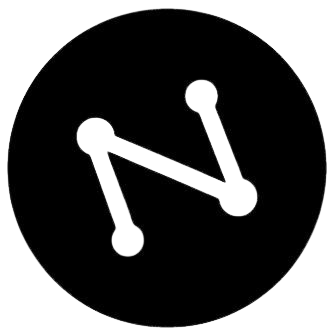
Organizing the schedule is much more than distributing time slots throughout the day. It’s about aligning clinical capacity, patient experience, and financial sustainability. When the schedule is inefficient, the clinic feels it: idle rooms in some shifts, overbooked professionals in others, cascading delays, last-minute cancellations, and lost revenue. A good schedule must be predictable for the team, flexible for the unexpected, and simple for the patient.
If you want to reduce no-shows, increase attendance, and keep a healthy care flow, the schedule must be treated as a process—with rules, standards, and metrics. This is fully achievable with clear methods and the right technology. In this article, we’ll cover how to organize your clinic’s schedule.
Before we continue, we need to ask: Are you already familiar with Ninsaúde Clinic? Ninsaúde Clinic is an intelligent software designed to simplify clinical management — combining an agile schedule, legally valid electronic health records, telemedicine, and complete financial control in one platform. Discover how Ninsaúde Clinic transforms daily operations and enhances patient care.

Start with a diagnosis: what does your schedule reveal today?
Before redesigning, understand the current state. Use 2–4 weeks of history to map:
- Attendance rate (show rate) by professional and by shift.
- Average time per visit (including room setup and record entry).
- Cancellation reasons and the average window between booking and appointment.
- Demand peaks (days/times) and bottlenecks (e.g., slow triage, time-consuming payments).
Practical example: if Mondays from 8:00–10:00 run 20% more no-shows than average, avoid slotting long procedures in that window and prioritize follow-up visits, which are usually shorter and have higher adherence.
Present these findings in a short meeting with front desk and clinical coordination. The goal is to agree on standard times per appointment type and booking rules.

Set schedule principles (the “rules of the game”)
Simple principles prevent micro-decisions at the front desk and keep predictability:
- Minimum slot by appointment type: first visit (e.g., 30–40 min), follow-up (20–30 min), procedure (variable).
- Recovery windows: after every 6–8 visits, 1 empty slot to absorb delays.
- Capacity by payer/insurer: limit of X appointments/day per payer (prevents ceiling overrun and denials).
- Confirmation policy: patient receives reminders at T-48 h and T-24 h, with options to confirm or reschedule.
- Dynamic waitlist: automatically fills cancellations with patients who opted to “be called.”
Tool tip: Ninsaúde Clinic’s Smart Schedule lets you configure automated confirmations via WhatsApp, SMS, and email, per-payer daily limits, and a waitlist, reducing manual calls and entry errors.
Schedule architecture: blocks, tracks, and rooms
Structure the schedule into blocks (time), tracks (appointment type), and rooms (physical resources):
- Fixed blocks per shift: morning and afternoon with 15, 20, or 30-minute patterns by specialty.
- Tracks by complexity: one track for first visits (longer), another for follow-ups (shorter), and one for procedures.
- Room allocation: link visits that require equipment to their specific room to avoid conflicts.
Once built, simulate a critical day (e.g., Tuesday afternoon) using your real mix of appointment types. Adjust until room changes and waits are minimized.
Practical example: physical therapy with 10-session packages. Create tracks with multi-session booking and generate all dates at once. In Ninsaúde Clinic, the package scheduling feature automates this flow and “reserves” the needed slots.
Booking and confirmation policies that work
Written rules prevent confusion. Standardize and communicate at booking time:
- Minimum/maximum lead time: e.g., book no more than 60 days out and no less than 24 h.
- Active confirmation: two automated reminders + reschedule link.
- No-shows and late arrivals: 10–15 min grace period; afterward, reallocate if there’s a waitlist.
- Optional prepayment for procedures and peak hours: reduces no-shows and improves cash flow.
With Ninsaúde Pay, you can send a payment link with the confirmation. If the patient hasn’t paid by T-12 h, the slot returns to the waitlist—everything flows into finance automatically, with no front-desk rework.
Reducing no-shows and “last-minute squeeze-ins”
No-shows won’t hit zero, but they can drop sharply when you combine communication, convenience, and clear rules:
- Multichannel confirmations (WhatsApp/SMS/email) with a simple confirmation question (Yes/No).
- Self-reschedule link: the patient adjusts on their own and frees the slot.
- Digital check-in: pre-visit form and a QR Code at reception to speed registration and initial anamnesis.
- Telehealth as an alternative if the patient can’t travel.
- Auto-notified waitlist when a cancellation appears.
In Ninsaúde Clinic, QR check-in and integrated telemedicine shorten lines, while custom call order keeps the room occupied with the next patient ready.

Front-desk routine: the daily step-by-step
A well-designed schedule still “fails at the finish line” if the front-desk routine isn’t light and repeatable. Standardize the day into 5 checkpoints:
- T-24 h: run automated confirmations; review declines and trigger the waitlist.
- T-2 h: validate pending documents (referrals, authorizations, consent forms).
- Arrival: check-in and routing via waiting-room screen with personalized calling.
- Post-visit: rebook follow-ups, send instructions, and payment link if needed.
- Day close: reconcile payments and register pending items in the integrated finance module.
With Ninsaúde Clinic Finance, accounts receivable, cash flow, and commissions update at each visit—no parallel spreadsheets.
Metrics that matter (and realistic targets)
Track weekly and share with the team:
- Utilization by professional (% of used vs. available slots). Target: 85–90%.
- Show rate (attendance). Target: > 92% for visits and > 95% for procedures.
- Front-desk wait time (check-in → start). Target: < 10 min.
- Scheduling lead time (days until the visit). Target: balance demand and capacity (e.g., 3–7 days).
- Revenue per clinical hour (per scheduled hour).
Build a simple dashboard and hold short stand-ups (15 min/week) to decide micro-tweaks: open a new time window, swap tracks for a shift, activate Saturdays in high season.
Patient communication: transparency that prevents rework
An organized schedule is also clear communication:
- Confirmation message with estimated time in clinic and required documents.
- Late/no-show policy sent at booking (no fine print).
- Pre-procedure instructions (fasting, meds, companion).
- Post-visit surveys (NPS) to spot waiting and reception bottlenecks.
In Ninsaúde Clinic, the CRM lets you segment patients and schedule recalls for returns, seasonal campaigns (e.g., check-ups), and payer-specific communications.
Integrations and compliance: frictionless and secure
The fewer parallel systems, the better. Prefer a platform that integrates:
- Scheduling + Electronic health record (EHR) + Finance + CRM in a single environment.
- Digital and electronic signatures for terms and consents, automatically attached to the EHR.
- Native telemedicine, no external apps.
- Reports and P&L by location (for multi-site groups).
Ninsaúde Clinic is built with role-based access, audit logs, and HIPAA compliance, reducing operational and legal risk while standardizing processes.

Closing with efficiency: your schedule as a competitive advantage
A well-structured schedule increases clinical capacity without adding work hours, cuts invisible costs (reschedules, idle time, denials), and improves perceived quality for patients. The secret is treating the schedule as a living process, tuned by data, with simple rules and technology that handles the heavy lifting. Start with a diagnosis, standardize times, design smart tracks, automate confirmations, and use weekly metrics for calibration. With these practices—and features like those in Ninsaúde Clinic—the schedule stops being a grid of time slots and becomes a strategic asset for your clinic.
Did you like this information? Then get ready for a continuous learning journey by following our blog. Are you a healthcare professional and don’t yet know the benefits of Ninsaúde Clinic? Stay ahead, optimize your processes, and raise the standard of patient care!

